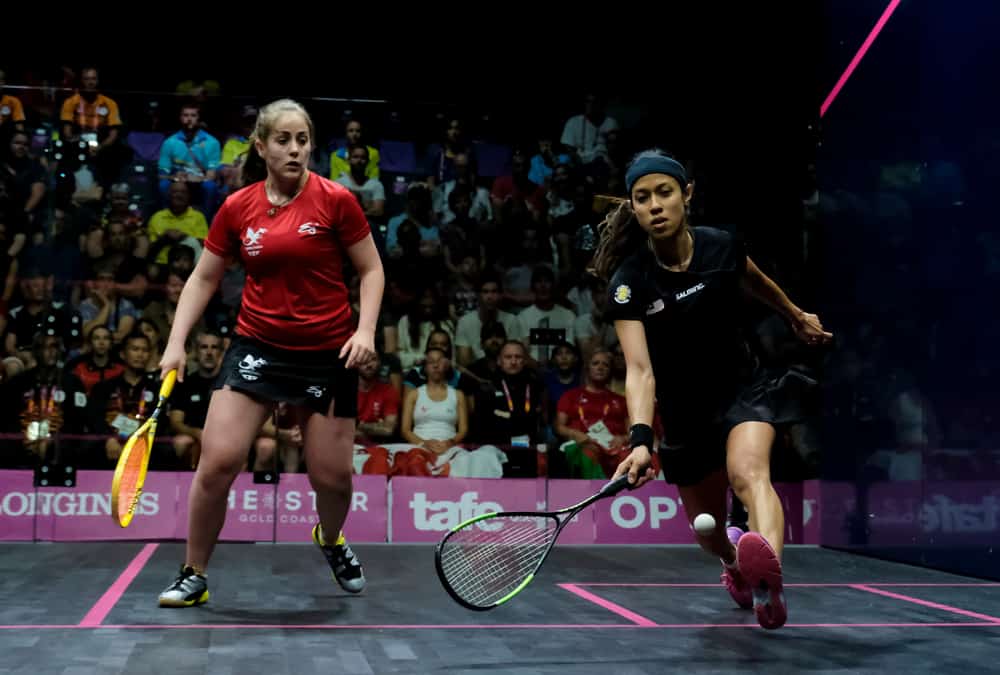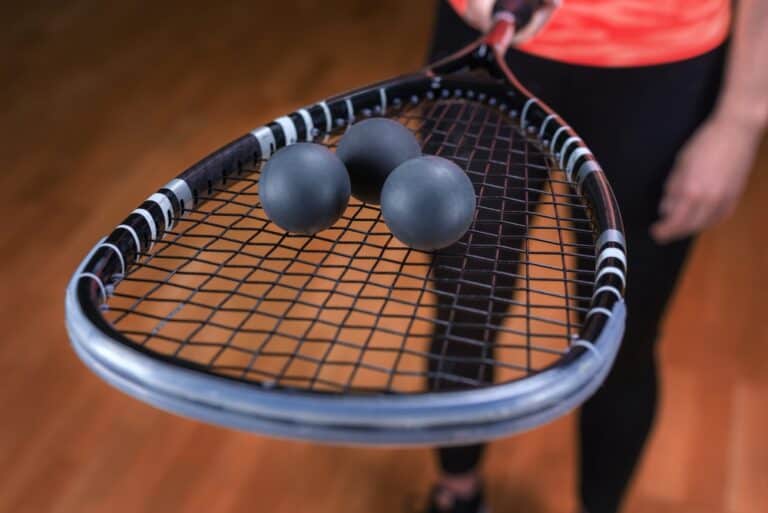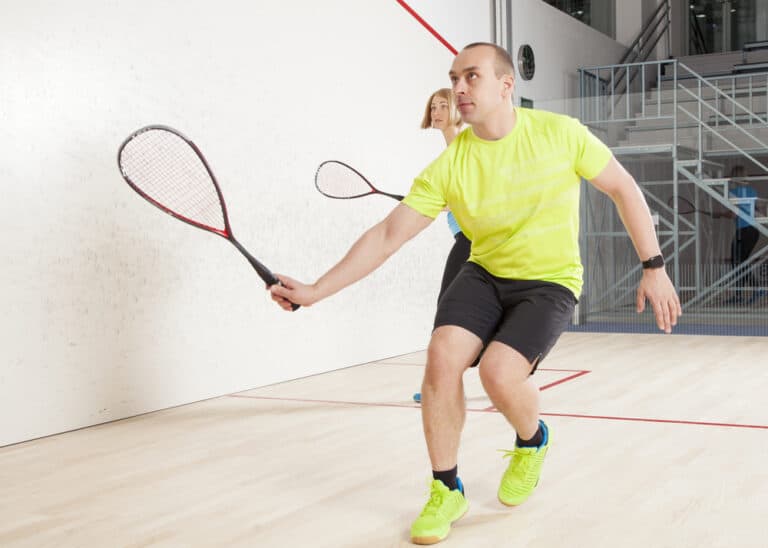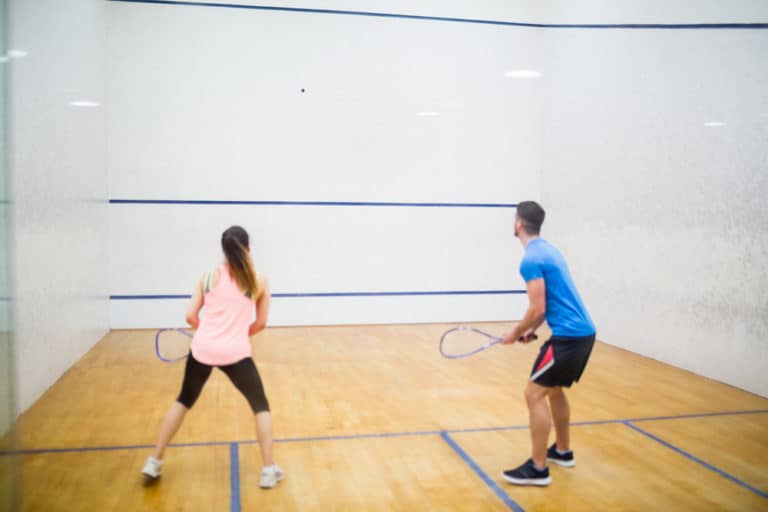Why Do They Say Hand Out In Squash?
If you have recently started playing or watching squash, you may have noticed some peculiar words when the score is announced. This might leave you out of breath and scratching your head. After a passage of play, sometimes a “hand out” is called along with the score. If the terms used are just out of your reach, you might find it helpful to consider the rules of squash and how scores are determined.
A “hand out” in squash is used when players must switch who gets to serve the ball next. The marker calls out a “hand out” after a serving player’s mistake or a winning return from the receiving player. In most scoring variations, a point is awarded regardless of which player serves.
When a playing sequence concludes in squash, the score must be announced, along with which player is serving. To illustrate how the score is determined and what happens when players switch serve, the relevant terminology and a brief examination of the rules are necessary.
Hand Outs Are Part Of The Squash Scoring And Serving System
In squash, like in tennis, the players take turns serving the ball onto the court to begin the sequence of play. Unlike tennis, players only switch serve whenever the serving player loses a point. The technical term for changing who gets to serve is known as a “hand out.”
The objective of squash is to beat your opponent by hitting the ball onto the front wall of the court, and your opponent either commits an error, or the ball bounces twice. The standard scoring format in squash follows a system where the winner of a playing sequence is awarded a point. If the receiving player wins the point, a hand out is called, and the players switch serve.
Squash matches are usually played as the best out of five games (or three, should the players prefer). The first player to win three games is the match-winner. Games of squash are played to 11 points unless both players have scored 10 points, in which case the game proceeds until either player obtains an advantage of two points.
Points in squash can be earned in the following ways:
- Your opponent cannot hit the ball before it bounces twice after your shot.
- The ball touches outside the confines of the court after your opponent hits it.
- Your access to the ball is deliberately obstructed by your opponent.
- A faulty serve by your opponent.
The marker calls out the score after every point, including a “hand out” when serving switches. Typically, the serving player’s score is announced first, followed by the receiving player’s score, and then a hand out is called if the players will switch serve.
Hand Outs And Scoring Variations In Squash
Scoring variations in squash can follow one of two common formats: Point-a-rally scoring to 15 or Hand-in/Hand-out scoring.
In “Point-a-rally scoring to 15” matches, the winner of a rally is awarded a point, and a hand out is called if the serving player doesn’t score the point, like in the standard scoring format. However, the game proceeds until 15 points are scored, rather than the usual 11. If both players reach a score of 14, play continues until a single player obtains an advantage of two points.
Hand outs also win points for the receiver under standard squash scoring rules. With “Hand-in/Hand-out scoring,” on the other hand, a player is only awarded points if they are serving. When a rally concludes, the server scores a point, or a hand out is called, and the receiver is awarded the serve.
Hand-in/Hand-out games are played for up to nine points unless both players have obtained eight points, in which case the receiving player must choose whether they wish to play up to nine or ten points. They must clearly indicate their choice to the marker, referee, and opponent. And then play continues until the first player reaches the set score.
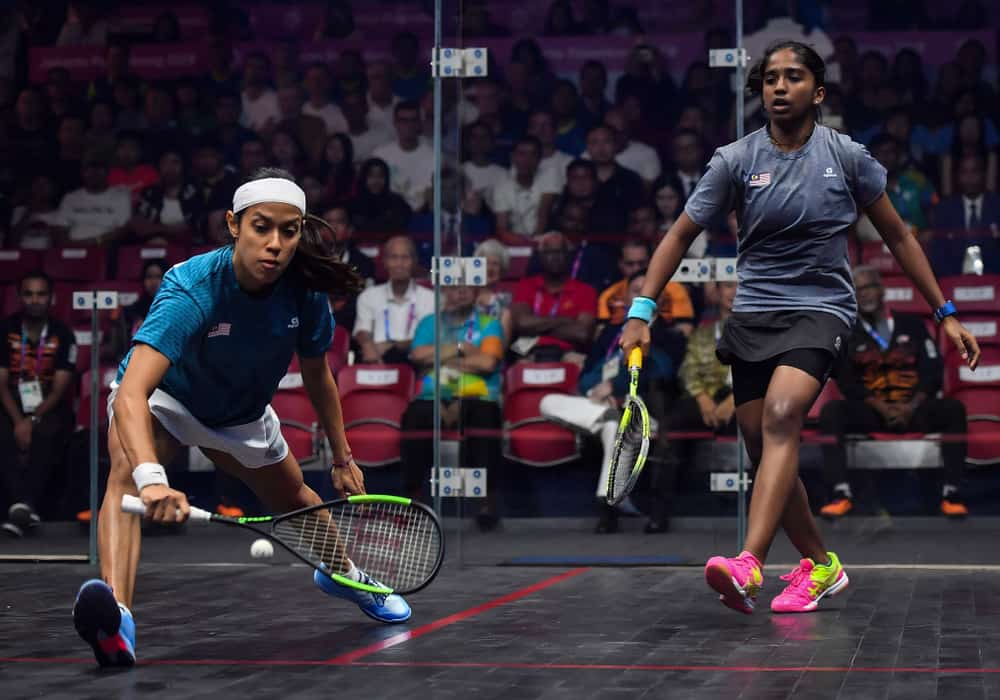
Scoring Terminology Related To Hand Outs In Squash
The scoring system in squash uses specific terms to refer to sequences of play and the referee’s decisions. Understanding how points are awarded and the playing conventions are vital for the players in a match and the spectators cheering them on.
| Scoring Term | Definition |
| Hand Out | A hand out in squash refers to a change of server at the end of a rally. The winning player has the option of choosing either service box. Either the receiving player struck a winning return, or the serving player made an error costing them the point. |
| Marker | The one match official who is authorized to take charge of keeping the score for the players, announcing points, faults, plays that were out, and which player gets to serve. |
| Referee | The one authorized match official in charge of resolving disputes and ensuring that the game’s rules are adhered to. |
| Let | During a rally, play may be interrupted so that the outcome of that point would be uncertain. In this case, the referee may decide that the point should be replayed and calls for a let. The initial server must restart the play by serving from the same service box with the same scoreline. |
| Stroke | During a rally, a player may have been illegally interrupted while playing a shot that would have won the point. In this case, the referee may decide that the player would have won the point and award a stroke, indicating a direct advantage to that player. |
How Serves Are Performed In Squash Matches
A squash racket is spun by its handle to determine which player will serve first. One of the players calls out whether the logo on the end of the handle will be upside down or straight up. The player who wins the call decides whether they wish to serve or receive when the match begins. Typically, players will choose to serve first, as this allows for setting the pace of the game.
The serving player can choose to serve from either service box. They must keep at least one foot within their chosen area and avoid having their other foot touch any of the lines of the service box. The serve is initiated when they hit the ball or attempt to hit it. The ball must hit the wall at the front between the bottom tin and the outline at the top and land in the receiving player’s quarter of the court.
Players only get a single opportunity to serve, unlike in tennis. Should the serve be valid, play continues, and a rally ensues until either player hits a winning return or commits an error. If the receiving player wins the rally, they are awarded a point, the marker calls a hand out, and the receiving player is allowed to serve.
Should the referee believe that unintentional interference caused a break in the play, a “let” can be called. The point will be replayed. Players do not hand out when a let is called but replay with the same score and the same player serving. With a deliberate infringement, the marker may call out a “stroke” outright, awarding a point, potentially along with a hand out.
Conclusion
Hand out is the squash term when players switch who gets to serve. When a player wins a point, they will have the opportunity to serve next, but their opponent can still score, even when they are not serving.

